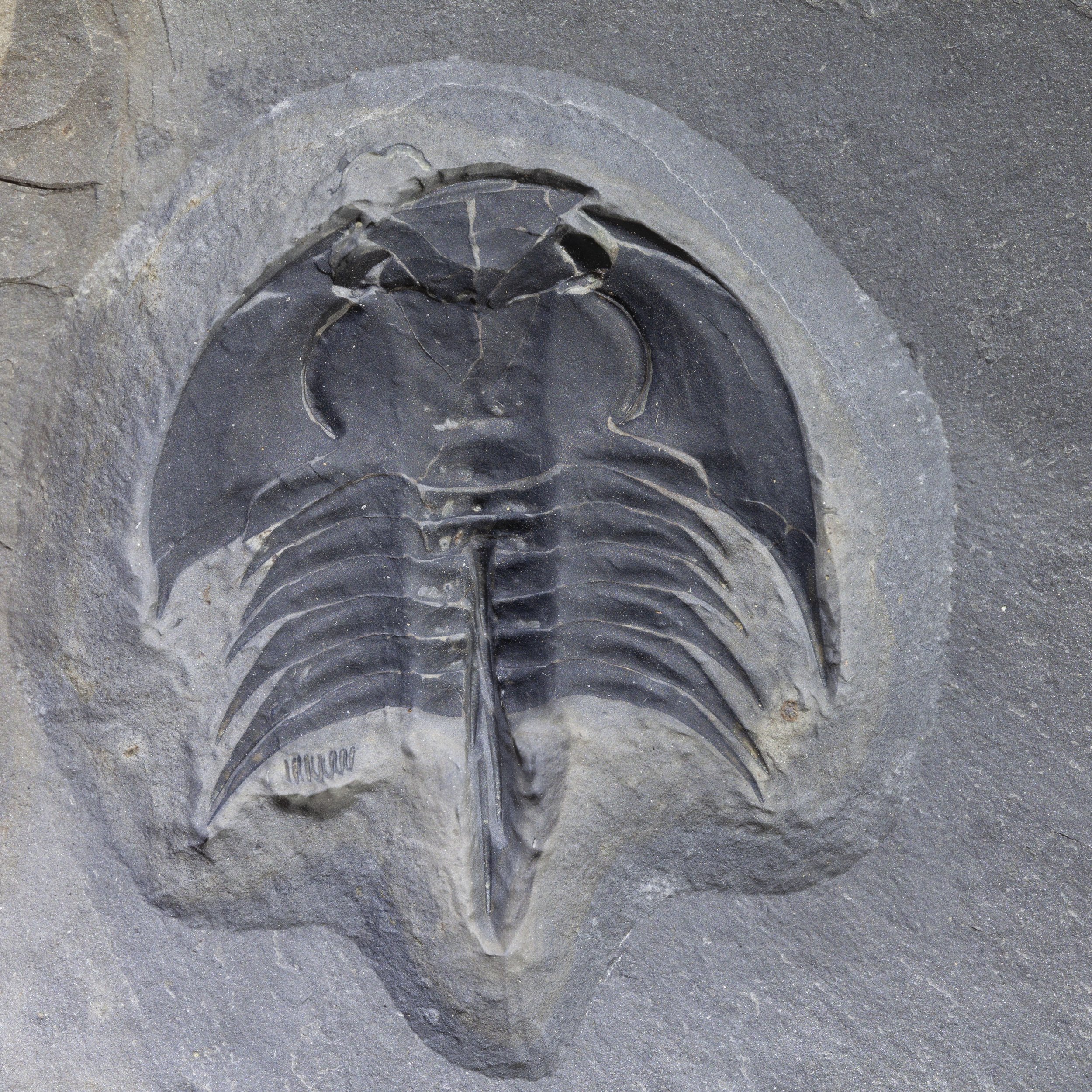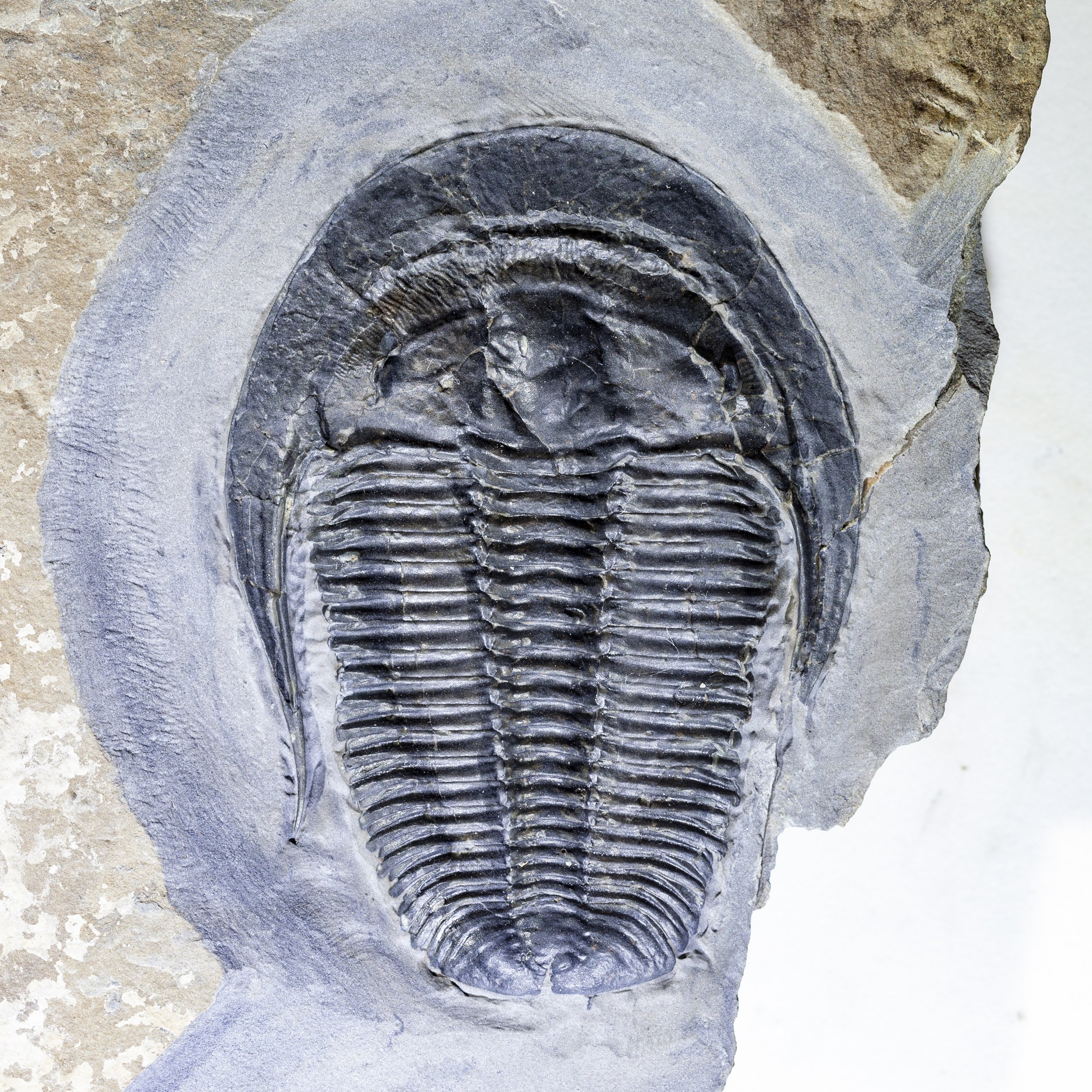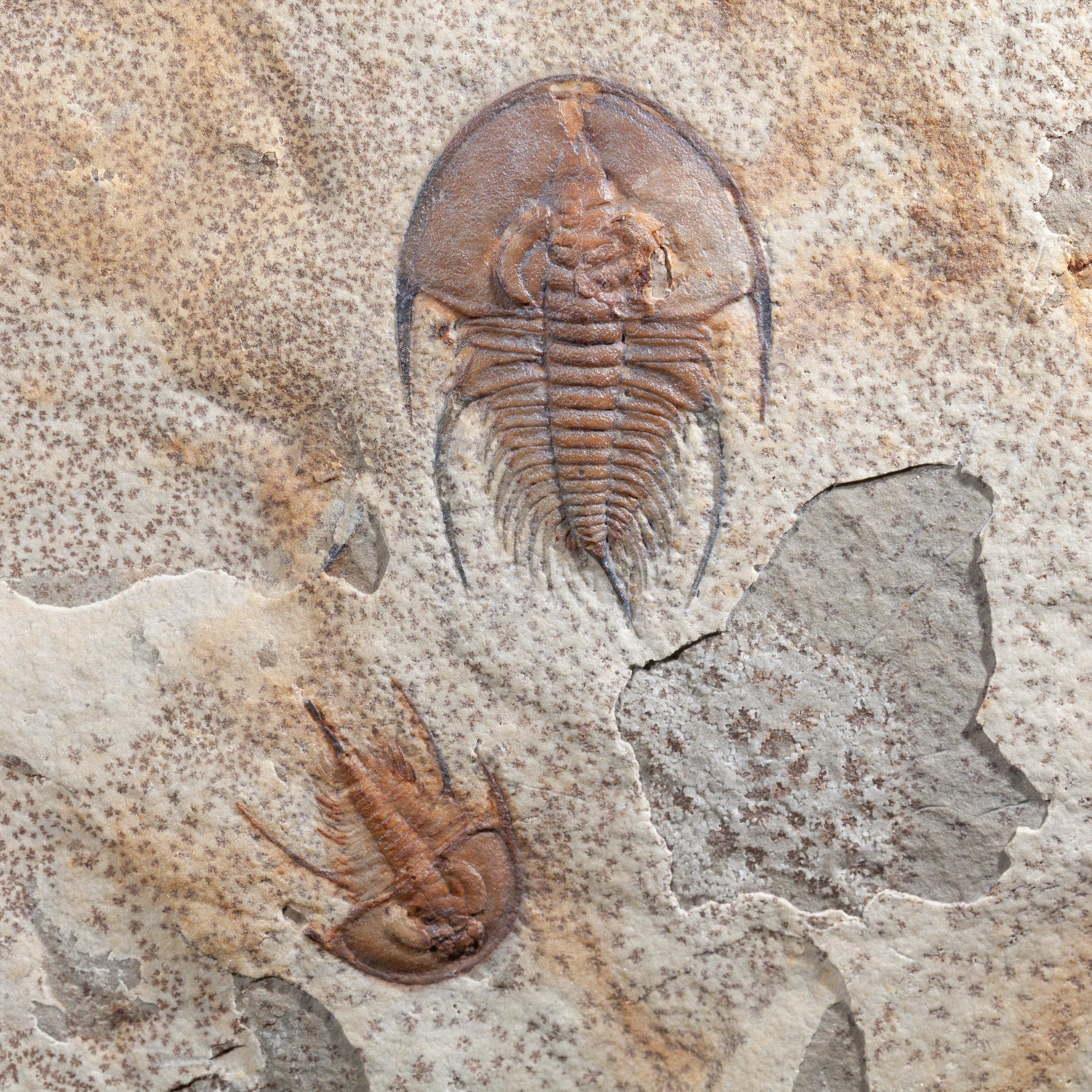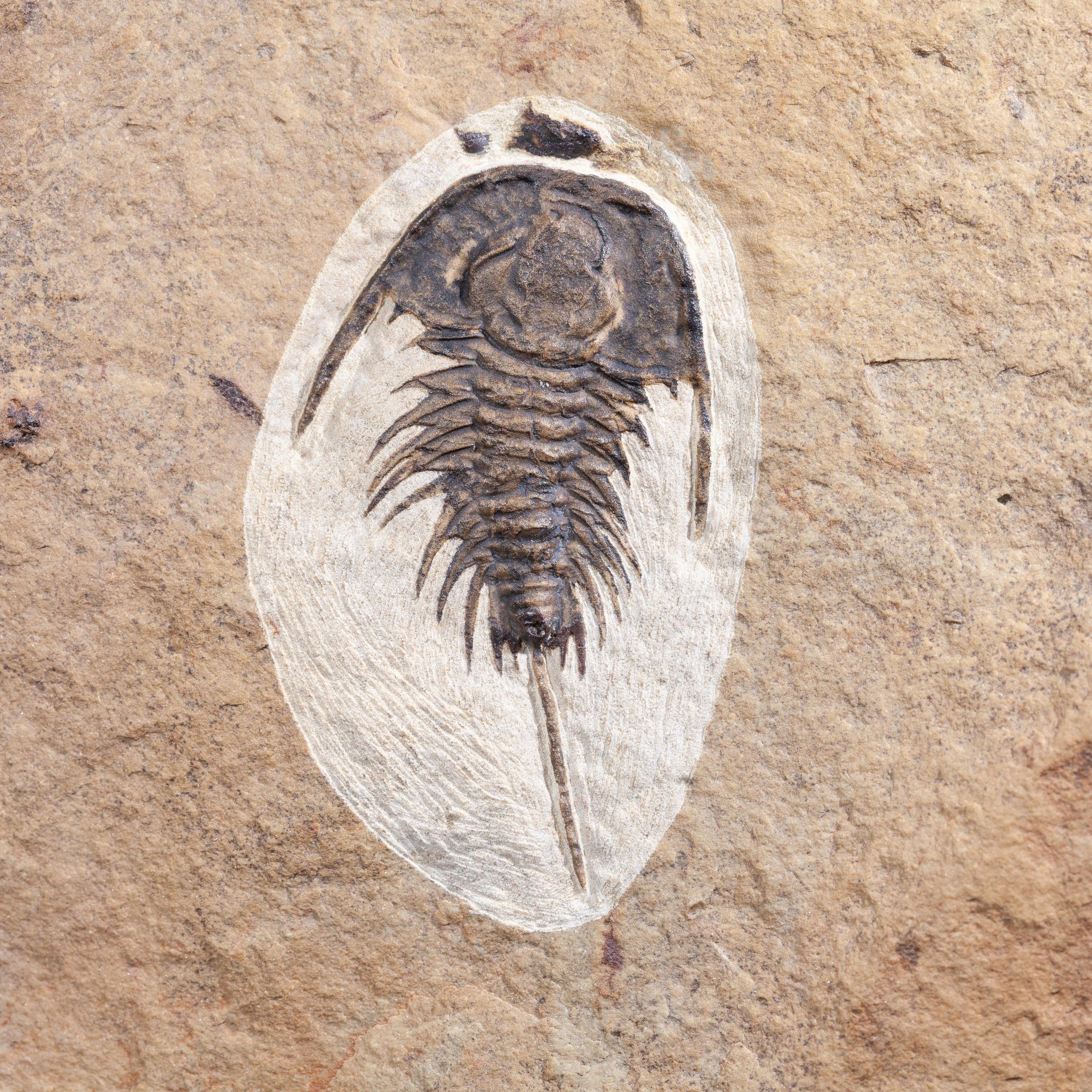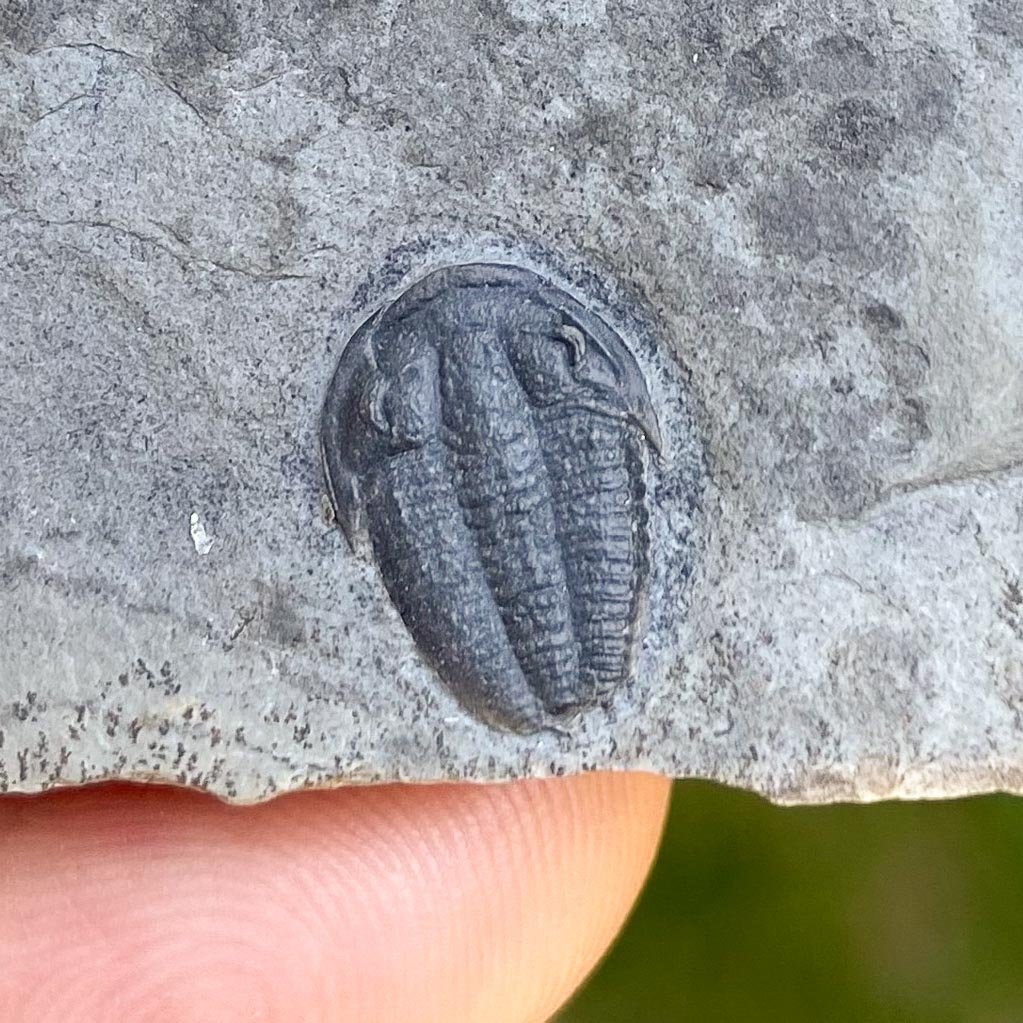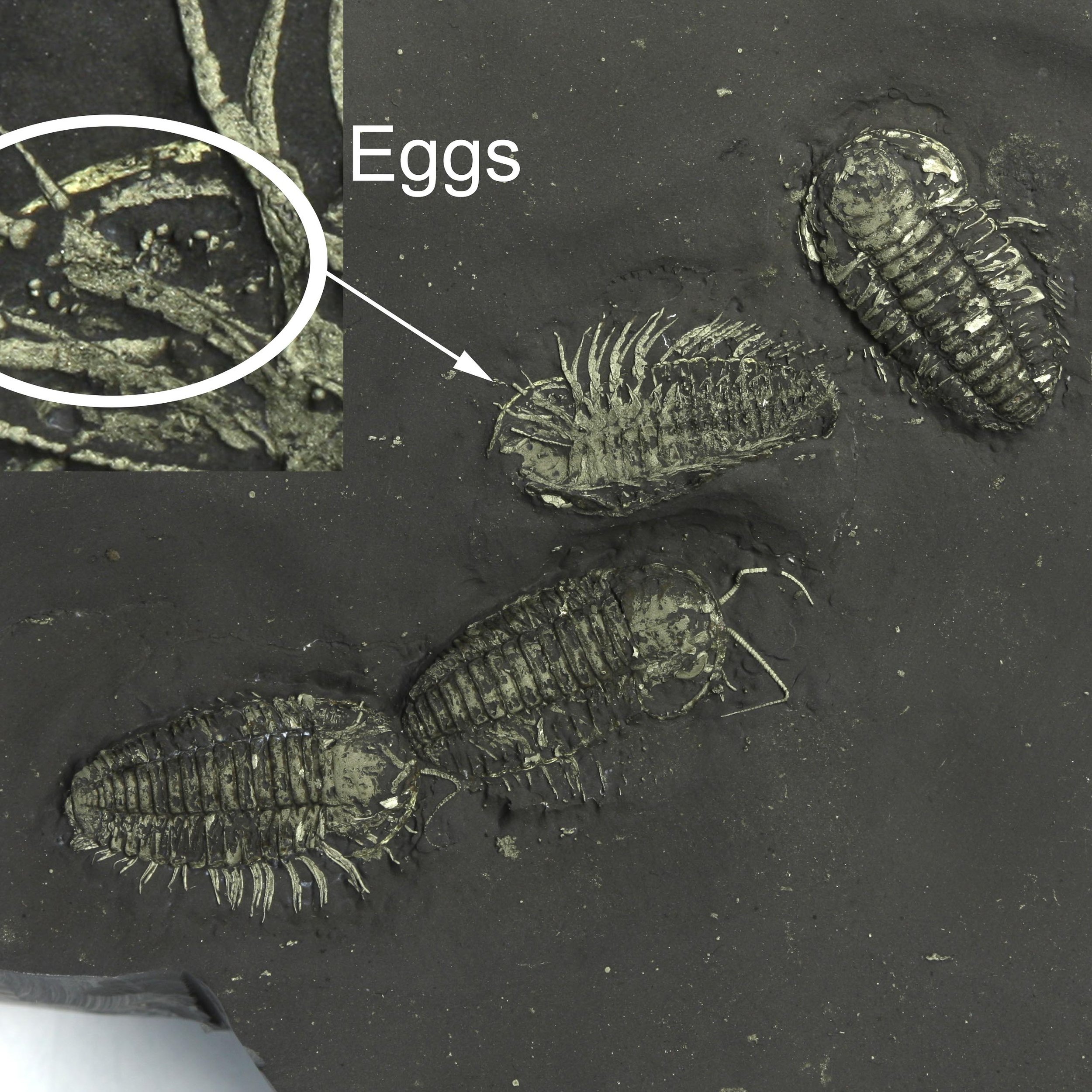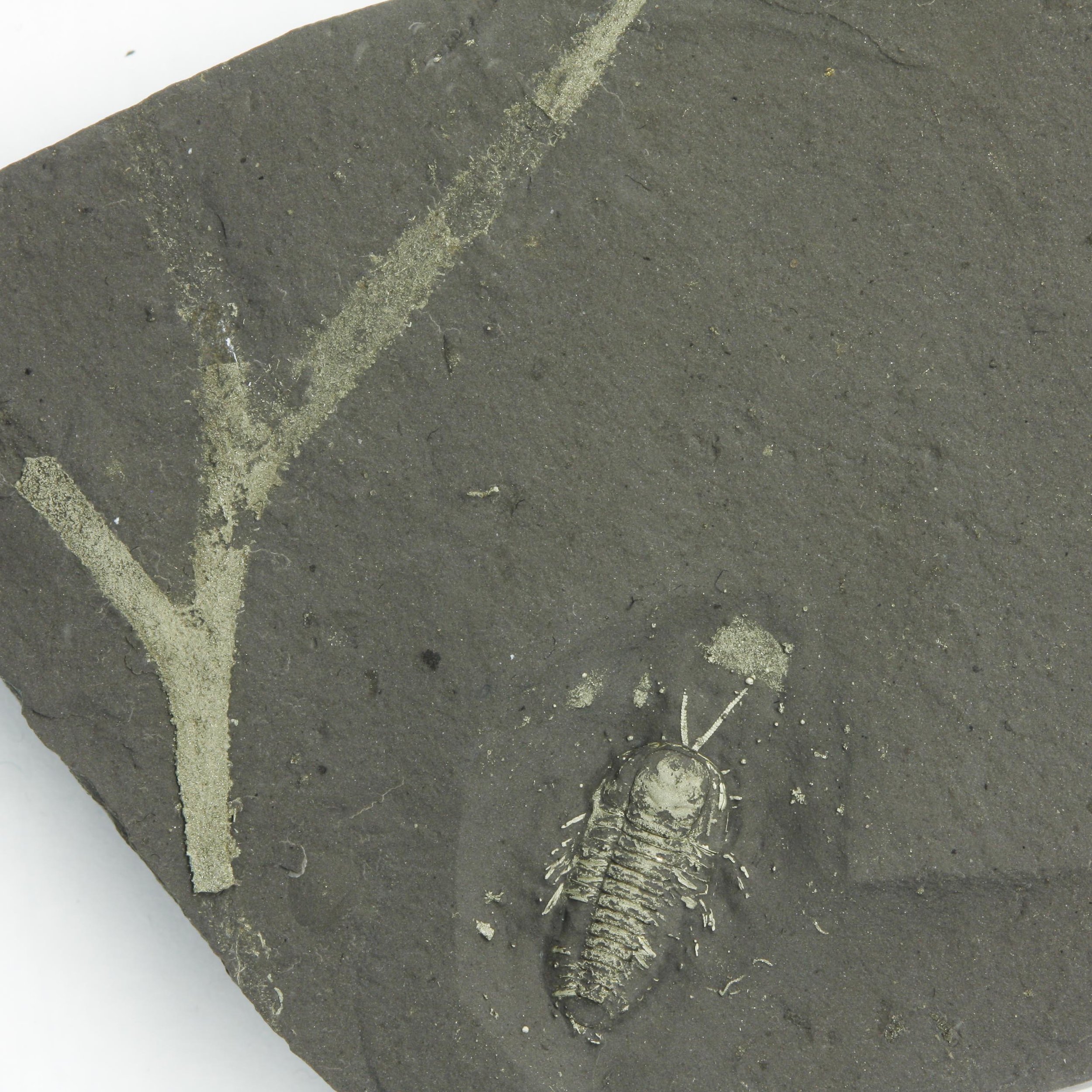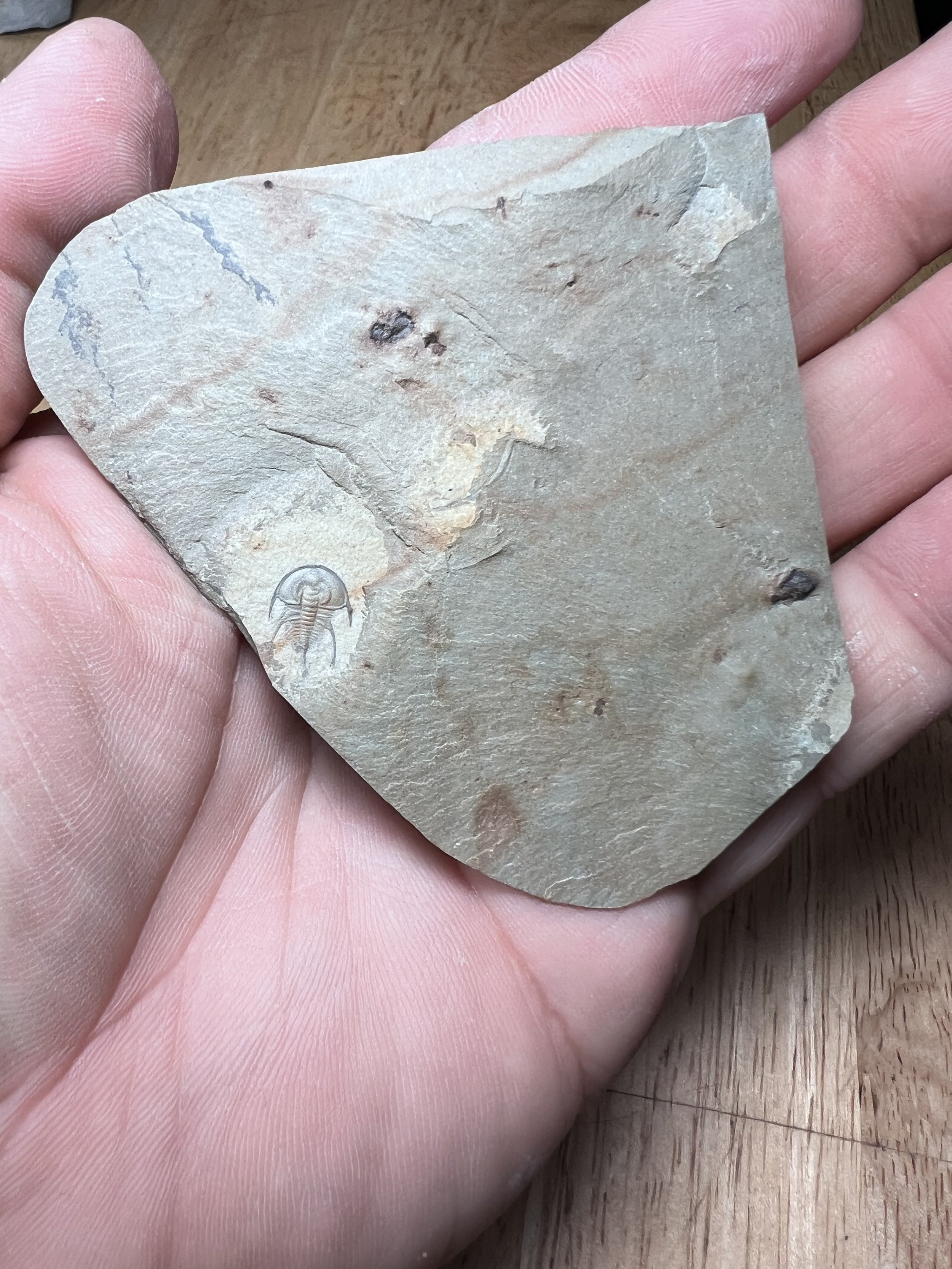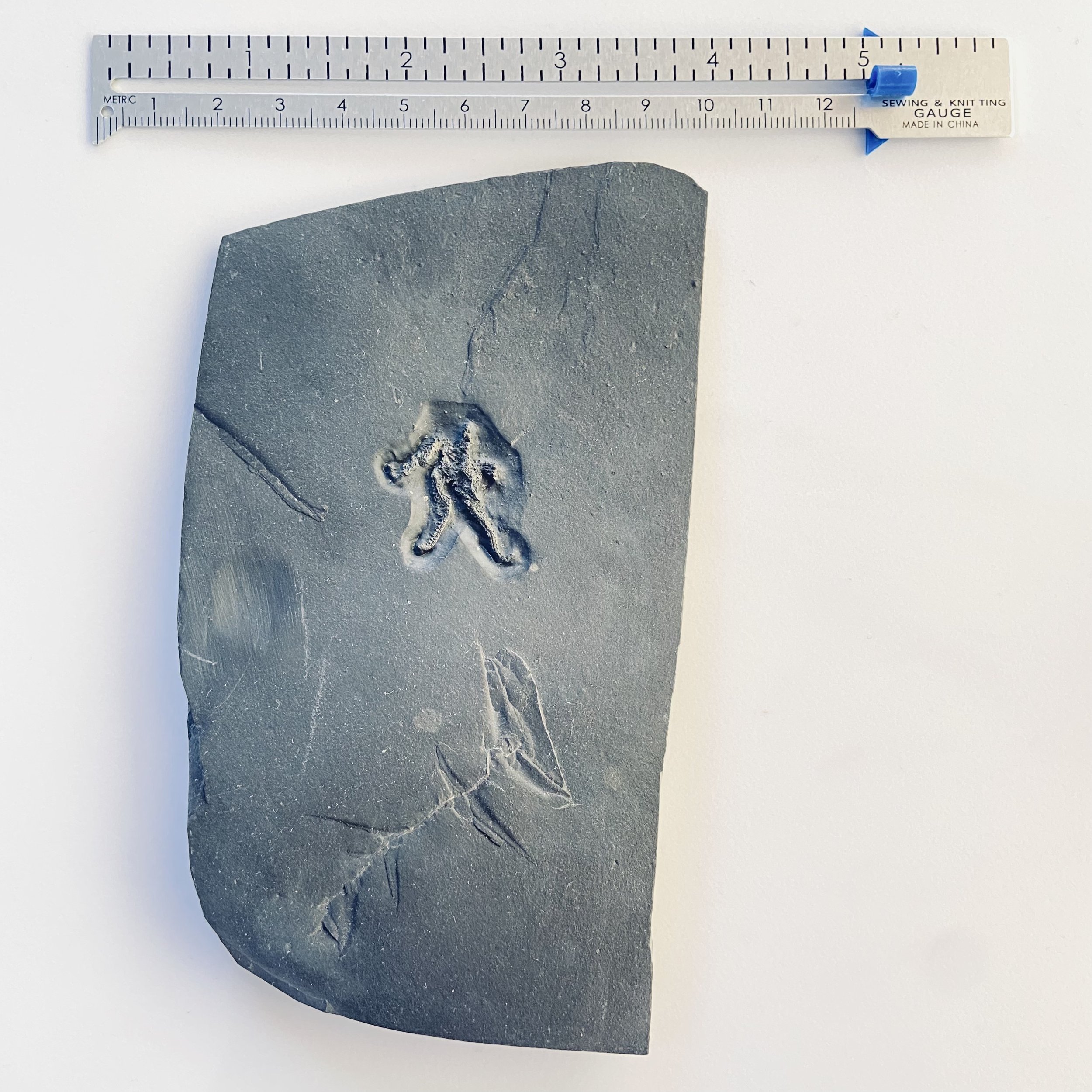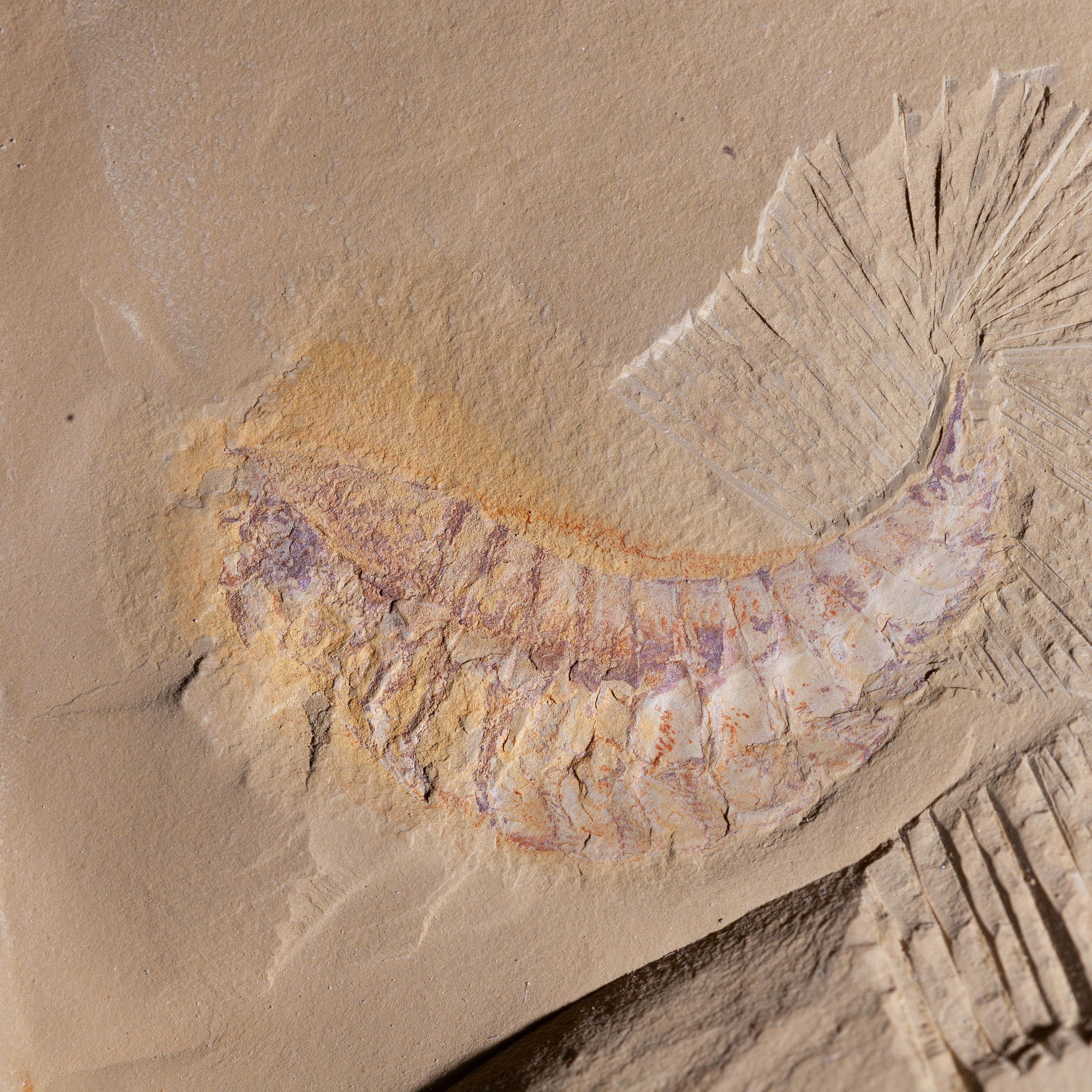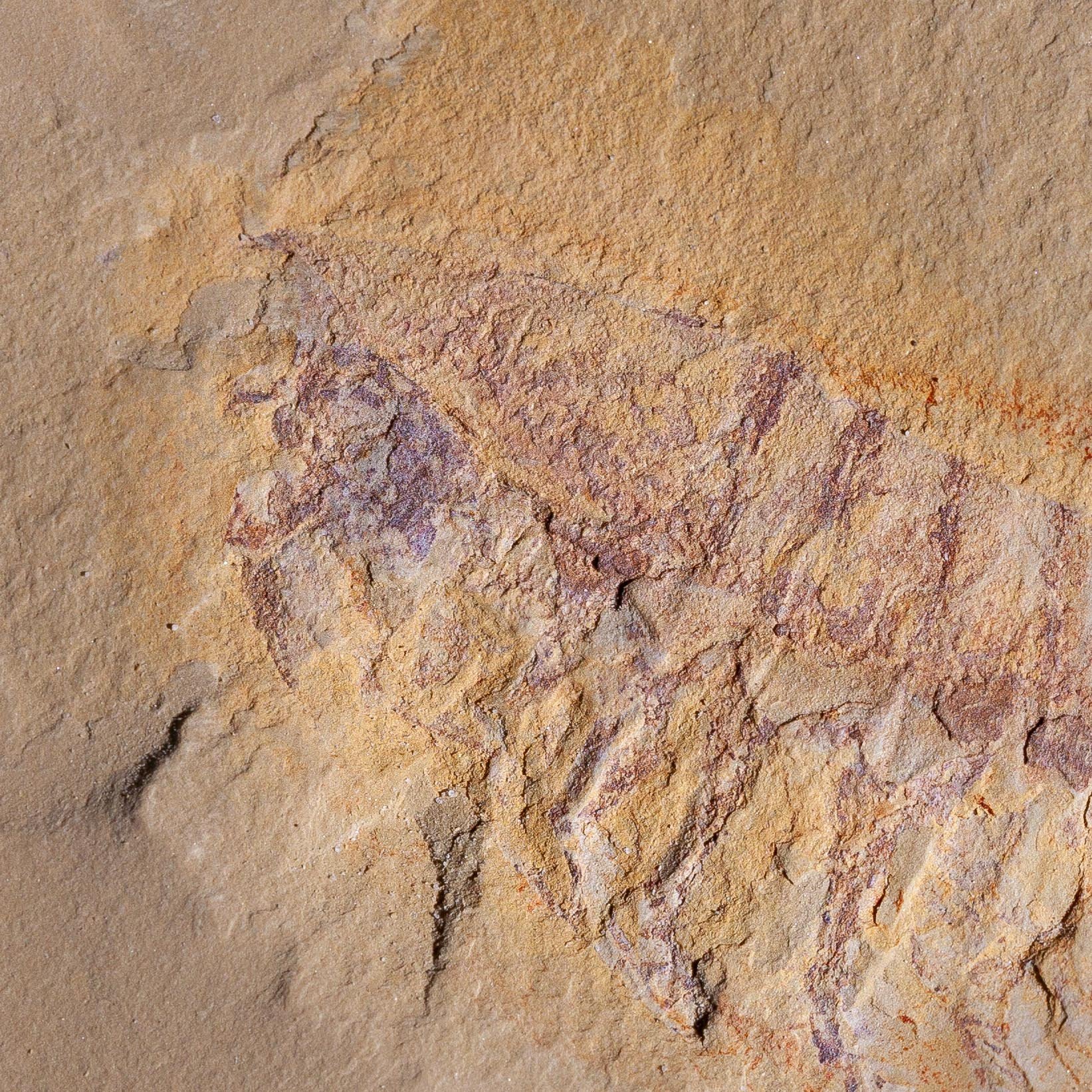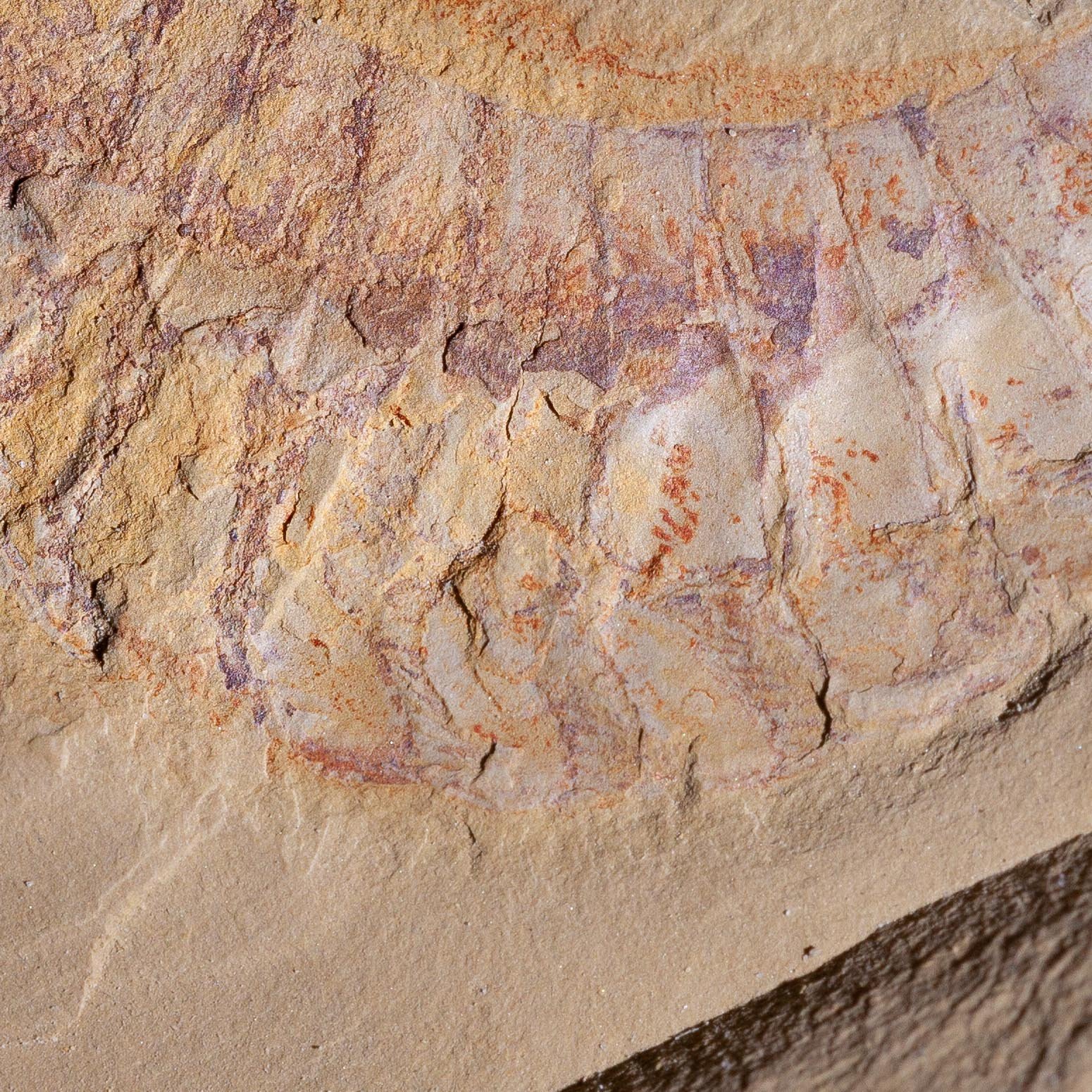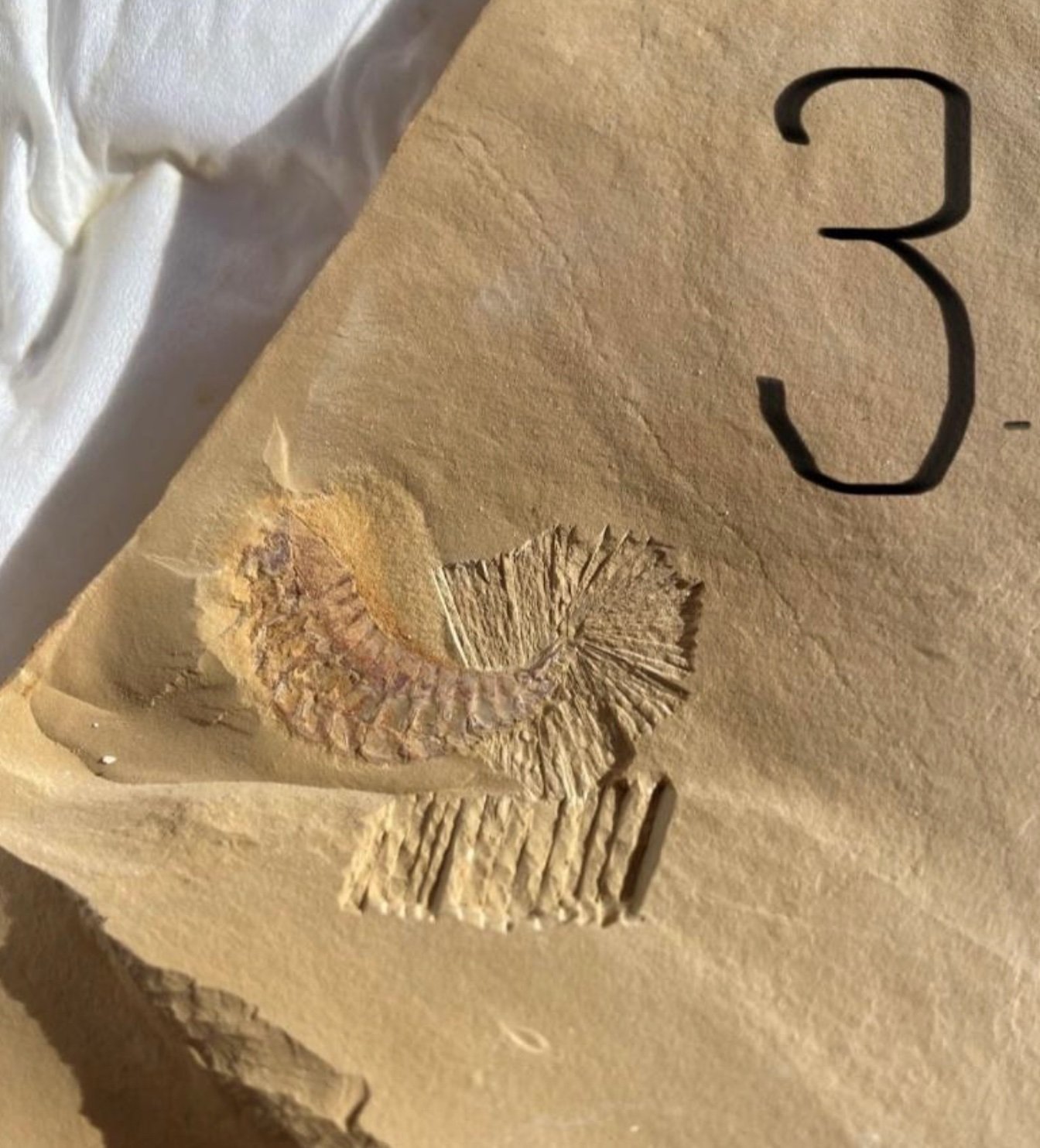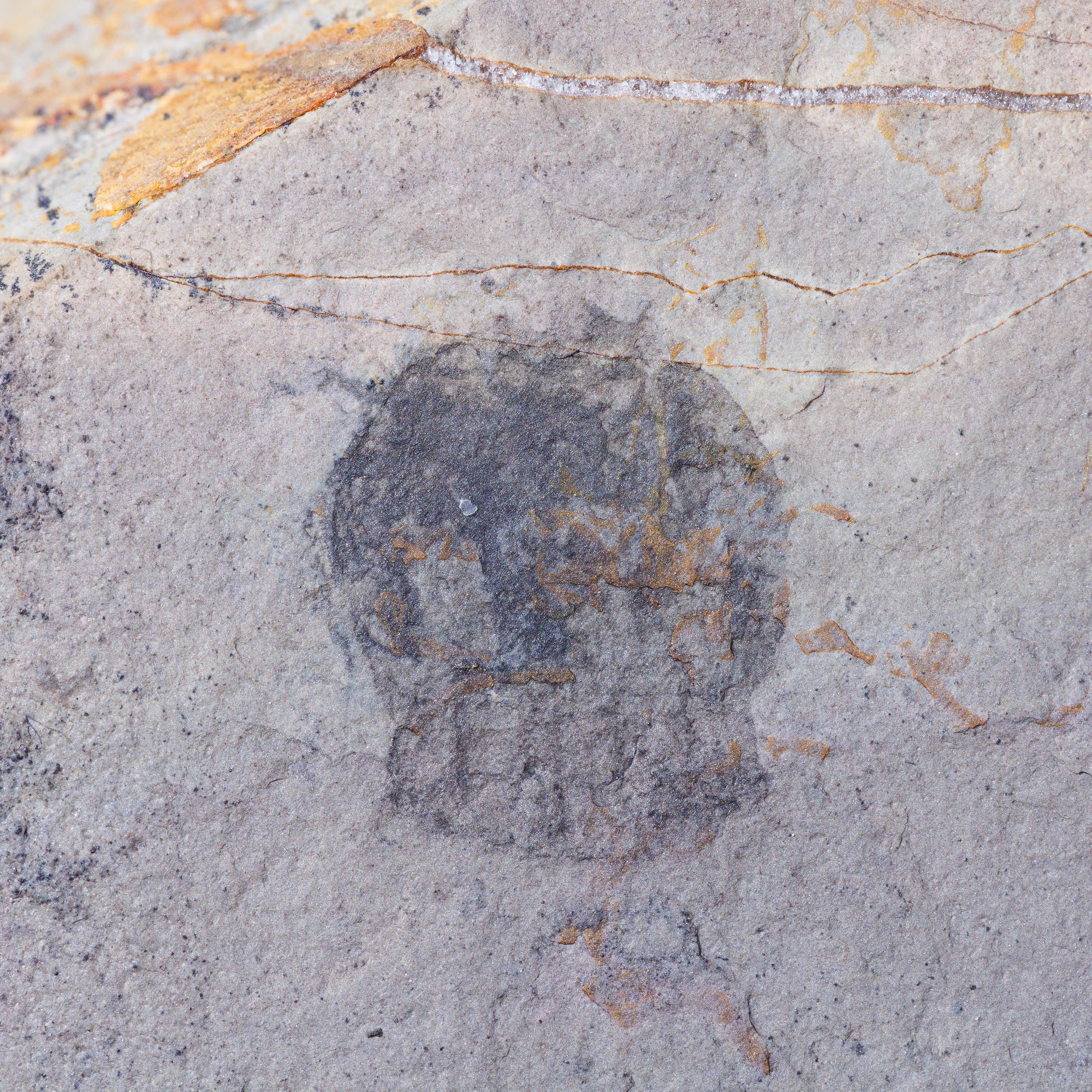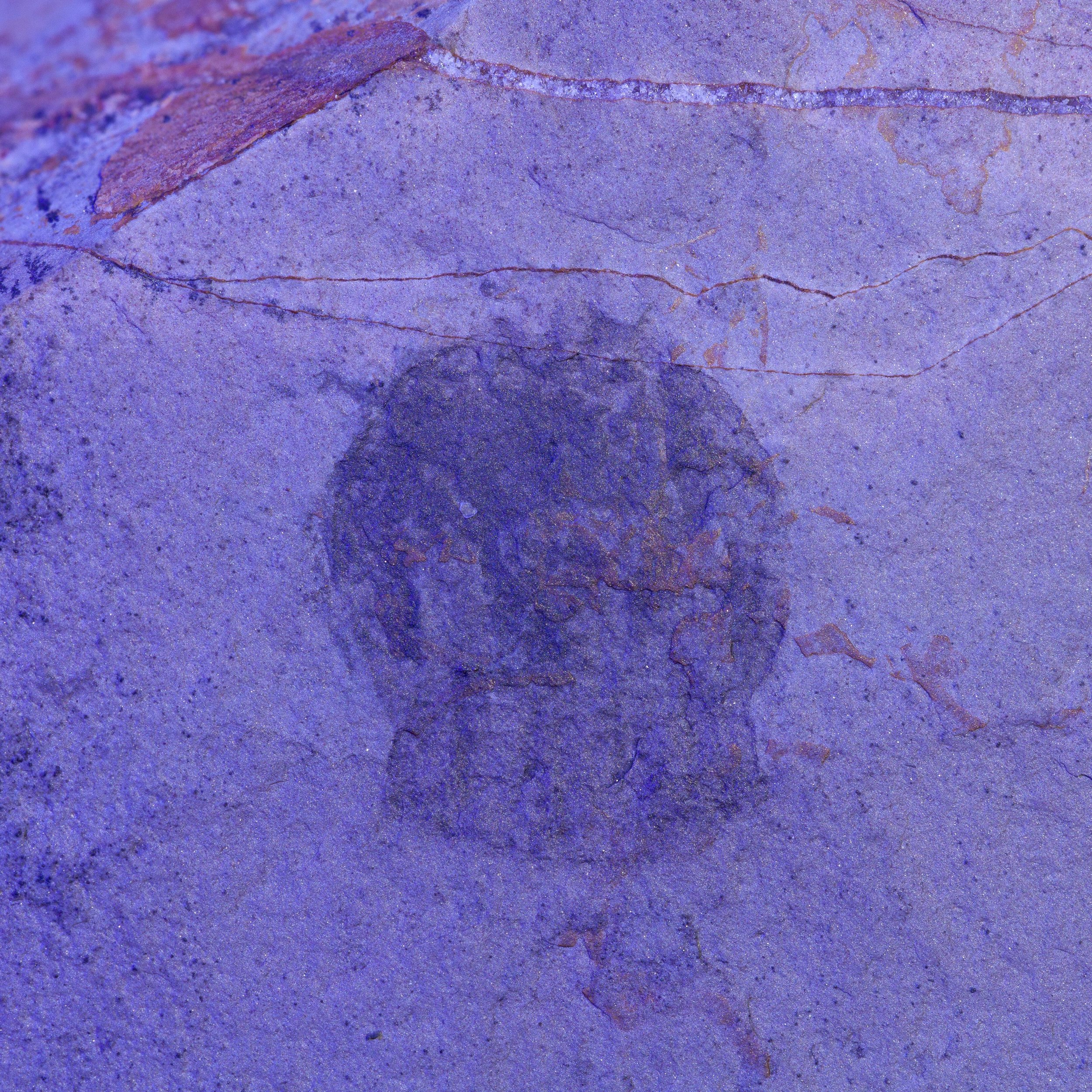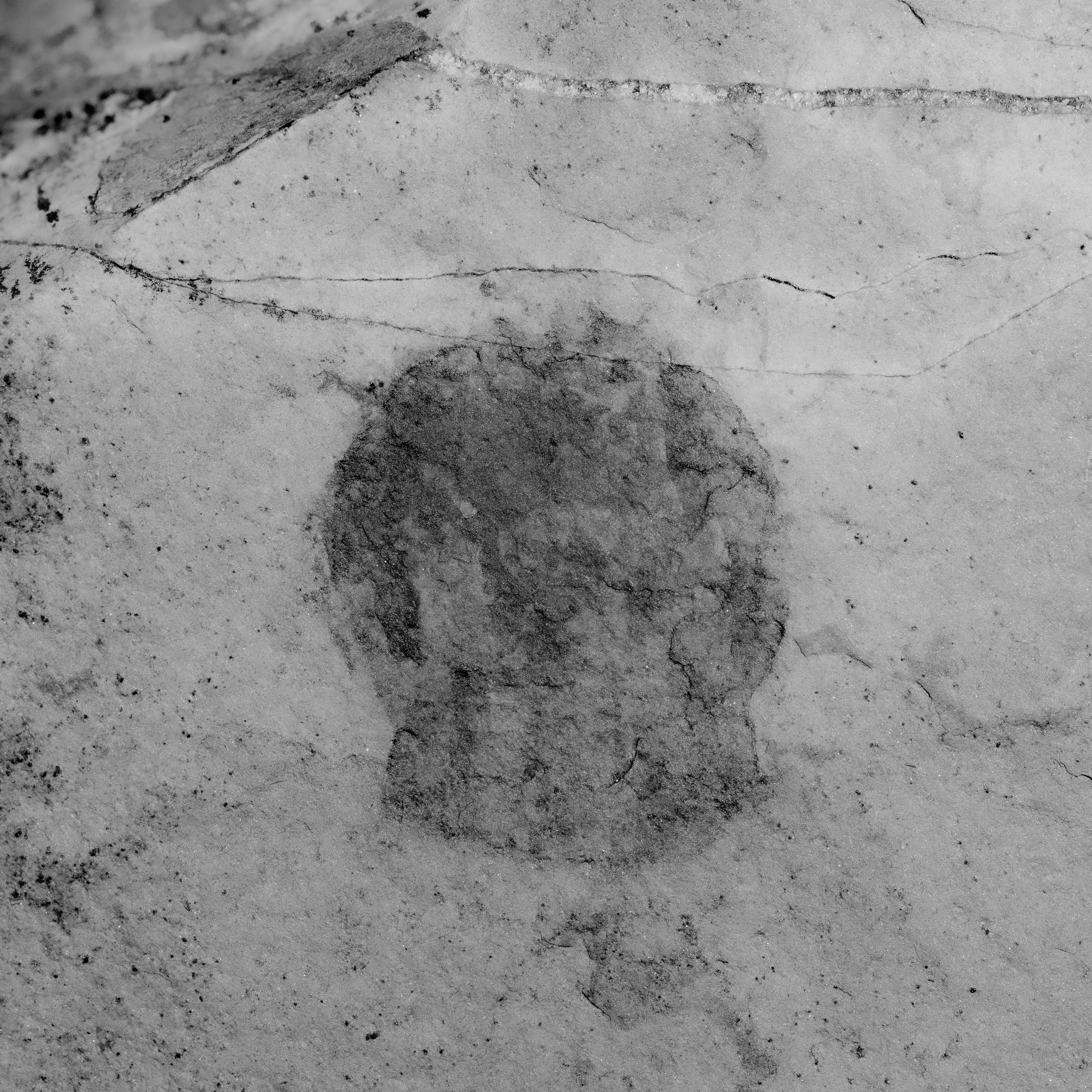Gerastos sp.
Vendor: Gold Bugs
SKU Number: SQ5815077
Gerastos is a genus of proetid trilobite from the Middle Devonian of Morocco. This plate represents a cluster of varying sized trilobites of this genus. These trilobites are inflated and stand out from the surrounding matrix.
Gerastos had holochroal compound eyes made up of many tiny lenses. These are the oldest and most common type of eye in trilobites. This plate represents a nice grouping of an unusual genus.
Full dimensions are listed below.
Vendor: Gold Bugs
SKU Number: SQ5815077
Gerastos is a genus of proetid trilobite from the Middle Devonian of Morocco. This plate represents a cluster of varying sized trilobites of this genus. These trilobites are inflated and stand out from the surrounding matrix.
Gerastos had holochroal compound eyes made up of many tiny lenses. These are the oldest and most common type of eye in trilobites. This plate represents a nice grouping of an unusual genus.
Full dimensions are listed below.
Vendor: Gold Bugs
SKU Number: SQ5815077
Gerastos is a genus of proetid trilobite from the Middle Devonian of Morocco. This plate represents a cluster of varying sized trilobites of this genus. These trilobites are inflated and stand out from the surrounding matrix.
Gerastos had holochroal compound eyes made up of many tiny lenses. These are the oldest and most common type of eye in trilobites. This plate represents a nice grouping of an unusual genus.
Full dimensions are listed below.
Additional Information
These typically small trilobites resemble those of the order Ptychopariida, from which the new order Proetida was separated in 1975 by Fortey and Owens. Like the order Phacopida, the proetids have exoskeletons that sometime have pits or small tubercles, especially on the glabella (middle portion of the head). Because of their resemblance to the Ptychopariida in some features, the proetids are included in the subclass Librostoma.
Unlike the trilobites of the phacopid suborder Phacopina, whose eyes are schizochroal, the proetids have the more common holochroal eyes. These eyes are characterized by close packing of biconvex lenses beneath a single corneal layer that covers all of the lenses. Each lens is generally hexagonal in outline and in direct contact with the others. They range in number from one to more than 15,000 per eye. Eyes are usually large, and because the individual lenses are hard to make out, they look smooth and sometimes bead-like. The thorax of proetids was made up of anywhere between 8–22 segments, but most commonly 10. Many also extend the backcorners of the headshield into so-called genal spines. These two features can aid in distinguishing proetids from some phacopid trilobites in the suborder Phacopina, to which they can be very similar.








